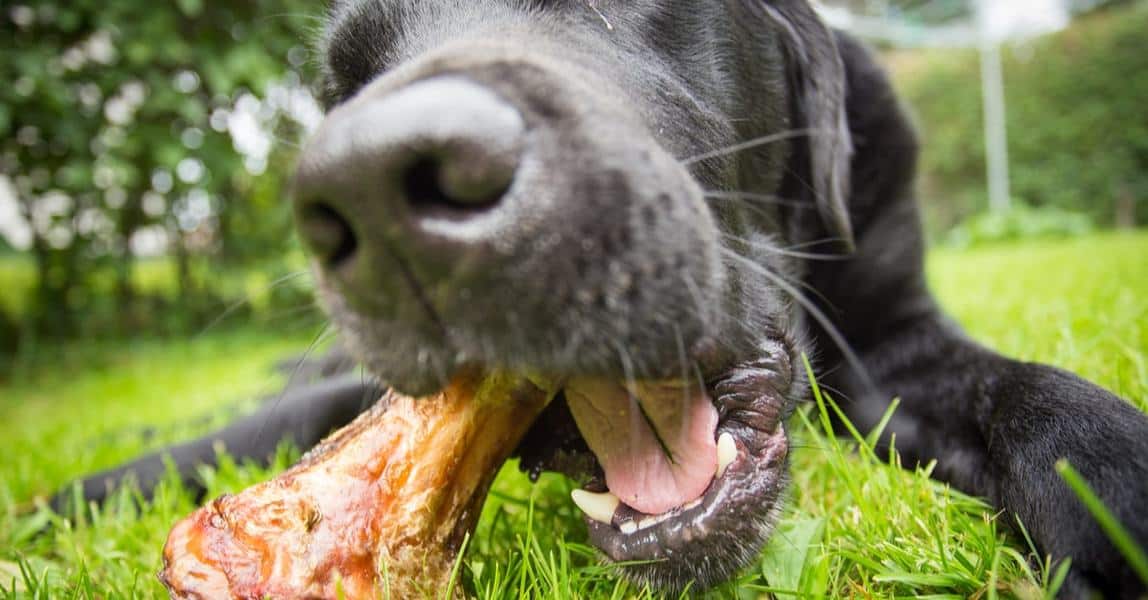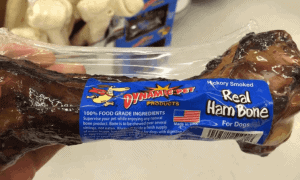“This post contains affiliate links, and I will be compensated if you make a purchase after clicking on my links.”
After receiving multiple complaints from dog owners, the FDA issued a warning against giving packaged bones and “bone treats” to dogs this holiday season.

Bones have always been a dog’s all-time favorite treat. For years, we have fed our pooches raw or cooked bones, and have delighted in seeing them enjoy every bit of it. Nevertheless, questions have recently been thrown to experts whether all bones are safe for dogs to eat.
Many dog owners know not to toss a turkey or chicken bone to their dog; those bones are just too brittle. But the U.S. Food and Drug Administration (FDA) says the risk goes beyond that, especially when it comes to the “bone treats” you may see at the store.
In a special consumer update, the FDA cautioned pet owners against buying certain commercially available bones for their dogs.
FDA has received about 68 reports of pet illnesses related to “bone treats,” which differ from uncooked butcher-type bones because they are processed and packaged for sale as dog treats. A variety of commercially-available bone treats for dogs—including treats described as “Ham Bones,” “Pork Femur Bones,” “Rib Bones,” and “Smokey Knuckle Bones”—were listed in the reports. The products may be dried through a smoking process or by baking, and may contain other ingredients such as preservatives, seasonings, and smoke flavorings.
So if you’re planning to give your dog a stocking full of bone treats this holiday season, you may want to reconsider. According to Carmela Stamper, a veterinarian in the Center for Veterinary Medicine (CVM) at the FDA, “Giving your dog a bone treat might lead to an unexpected trip to your veterinarian, a possible emergency surgery, or even death for your pet.”
Illnesses reported to FDA by owners and veterinarians in dogs that have eaten bone treats have included:
- Gastrointestinal obstruction (blockage in the digestive tract)
- Choking
- Cuts and wounds in the mouth or on the tonsils
- Vomiting
- Diarrhea
- Bleeding from the rectum, and/or
- Death. Approximately fifteen dogs reportedly died after eating a bone treat.
The reports, sent in by pet owners and veterinarians, involved about 90 dogs (some reports included more than one dog). In addition, FDA received seven reports of product problems, such as moldy-appearing bones, or bone treats splintering when chewed by the pet.
Additionally, the FDA provided the following tips to keep your dog safe:
- Chicken bones and other bones from the kitchen table can cause injury when chewed by pets, too. So be careful to keep platters out of reach when you’re cooking or the family is eating.
- Be careful what you put in the trash can. Dogs are notorious for helping themselves to the turkey carcass or steak bones disposed of there.
- Talk with your veterinarian about other toys or treats that are most appropriate for your dog. There are many available products made with different materials for dogs to chew on.
“We recommend supervising your dog with any chew toy or treat, especially one she hasn’t had before,” adds Stamper. “And if she ‘just isn’t acting right,’ call your veterinarian right away!”
The FDA warning applies to specific cooked, smoked, or dried bones that are packaged and sold specifically for dogs. But, this doesn’t mean that all bones are bad! Almost any raw bone is safe for dogs. Believe it or not, raw chicken, turkey, lamb, beef, or even oxtail bones can be fed in their natural raw form. Besides being tasty, raw bones are excellent for maintaining dental health.
Any bones, treats, and chews should be appropriately sized so as not to become a choking hazard and should be taken away if gnawed or chewed small enough to fit inside your dog’s mouth.
To report a problem with a pet food or treat, please visit FDA’s Web page on “How to Report a Pet Food Complaint.”
















